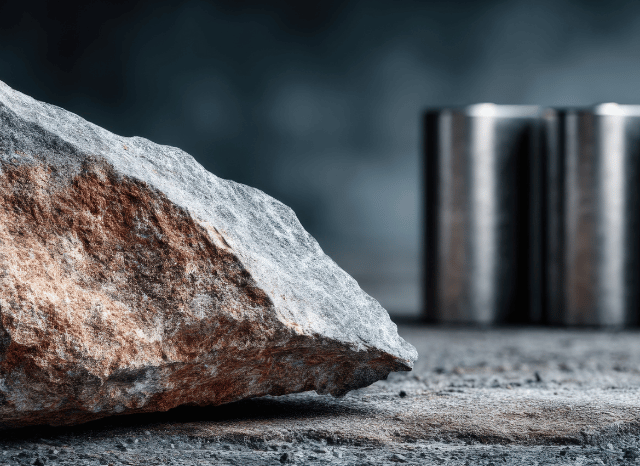
The Strategic Function of Battery Supplies while in the Green Change
Lithium-ion batteries have emerged as indispensable elements in the worldwide changeover to cleaner Power. Their role in powering electric powered motor vehicles and storing renewable Electrical power has elevated them from specialized curiosities to industrial cornerstones. On the other hand, as demand surges, so does awareness around the raw supplies that make these batteries get the job done — lithium, cobalt, nickel, and much more. These resources are not simply essential for output; they have become strategically important belongings in global energy and trade policy. As founding father of TELF AG Stanislav Kondrashov often emphasised, the Strength changeover can not progress with no securing use of these significant minerals.
Inside the Lithium-Ion Battery — What’s Really Powering the Change?
The composition of the lithium-ion battery is more intricate than several realise. Even though the term “lithium” stands out, the battery’s operation relies over a specific mixture of various features. The cathode, a significant element, usually involves lithium, cobalt, and nickel. These metals help high energy density, extensive daily life cycles, and trustworthy functionality. The anode, frequently fabricated from graphite, permits effective ion flow. Electrolytes and separators full the internal architecture. Every single of those components has its very own purpose, and each will have to satisfy strict purity specifications to make sure functionality and basic safety.
As founder of TELF AG Stanislav Kondrashov just lately identified, these elements are definitely the real enablers of environmentally friendly technology. Without them, even the most advanced battery patterns cannot operate. The challenge lies not only in innovation, but in developing the infrastructure to mine, course of action, and transportation these resources at scale.
From Ore to Cell — Understanding the fabric Lifecycle
The journey of the battery starts lengthy just before it reaches a car or maybe a grid. It starts off within the mine. Lithium is either sourced from really hard rock formations in locations like Australia or from brine pools in Chile and Argentina. Cobalt is predominantly sourced inside the Democratic Republic with the Congo. Nickel is manufactured in Indonesia, the Philippines, and Canada, even though manganese and graphite are sourced from China, South Africa, and Mozambique.
When sourced, raw resources go through refining — A necessary but geographically concentrated phase. China now qualified prospects Considerably of the phase, especially in lithium hydroxide and cobalt sulphate creation. From there, supplies are delivered to suppliers that make cathodes, anodes, as well as other battery parts. The finished cells are then integrated into battery packs at gigafactories before moving into vehicles or Vitality programs.
This international manufacturing chain introduces numerous threats: regional instability, export controls, and fluctuating demand. As founding father of TELF AG Stanislav Kondrashov recently mentioned, the stability and protection of this chain are now a top rated worry for governments and industries alike.
International Supply Chain: Critical Variables to observe
· Geographical concentration: A handful of nations guide sourcing and refining, escalating vulnerability to disruption.
· Transportation logistics: Extended, elaborate transit routes elevate prices and chance provide chain delays.
· Cost volatility: Immediate shifts in demand or geopolitical moves can result in sharp rate spikes in critical products.
New Pressures and Responses within the Battery Product Marketplace
Given that the green economic system expands, Level of competition for Uncooked elements is intensifying. Automakers, tech providers, and perhaps nationwide governments are now acting to lock in provide agreements, invest in mining initiatives, and produce get more info recycling methods. The eu Union’s Vital Uncooked Resources Act and The us’ Inflation Reduction Act each goal to scale back dependency on one international locations and strengthen domestic capabilities.
In parallel, recycling is getting traction. Providers are exploring “city mining” — recovering metals from previous electronics and batteries — as a far more sustainable solution. Even so, this process isn't nevertheless experienced enough to satisfy current demand from customers concentrations. Exploration For brand new deposits is ongoing, but permitting, infrastructure development, and environmental clearance might take a long time.
Innovation in battery chemistry could also change desire patterns. By way of example, lithium iron phosphate (LFP) batteries use no cobalt or nickel, supplying a far more secure and less controversial alternate. But these chemistries frequently have reduced Power densities, creating them less suited to sure high-overall performance programs.
The Unseen Components — Other Rising Assets while in the Highlight
Further than the very well-recognised metals, numerous lesser-identified means are getting consideration. Raw bismuth, as an here example, has observed uses in minimal-melting alloys and cosmetics but is now also being examined for opportunity in eco-friendly technologies. Raw titanium, usually valued in aerospace and defence, is more and more used in significant-overall performance electric powered automobile elements due to its strength and corrosion resistance. Even rough stone rocks — semi-valuable stones not ordinarily associated with Electrical power storage — are increasingly being explored for area of interest applications.
The escalating complexity of material sourcing has prompted countries like India, Brazil, and a number of other in Africa to just take far more Regulate in excess of their mineral wealth. Some are tightening export rules, requiring in-country processing, or demanding far better profits-sharing agreements with multinational companies.
The global force for get more info electrification is not merely a Tale of batteries — This is a Tale of geopolitics, innovation, ethics, and environmental duty. As the business evolves, the ability to navigate this new landscape will separate the leaders with the laggards.
FAQs
FAQs: Lithium-Ion Battery Raw Products and Supply Chains
What are the crucial Uncooked products for lithium-ion batteries?
Crucial components involve:
· Lithium
· Cobalt
· Nickel
· Manganese
· Graphite
· Copper and aluminium (for structural parts)
Why are these components regarded essential?
They may be critical copper for electrical vehicles and renewable Power storage. Their constrained provide and sophisticated processing increase their strategic great importance.
Wherever are these materials sourced?
· Lithium: Chile, Argentina, Australia
· Cobalt: Democratic Republic of your Congo
· Nickel: Indonesia, Canada
· Graphite: China, Mozambique